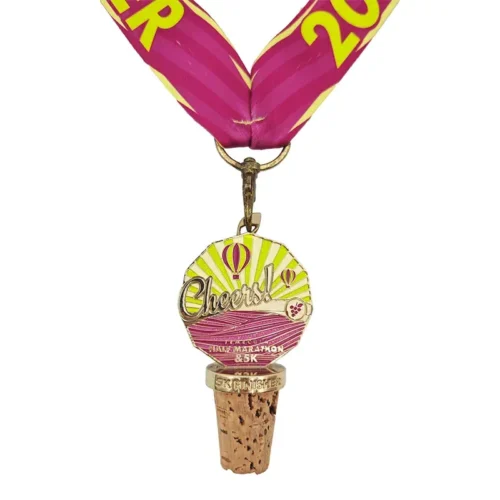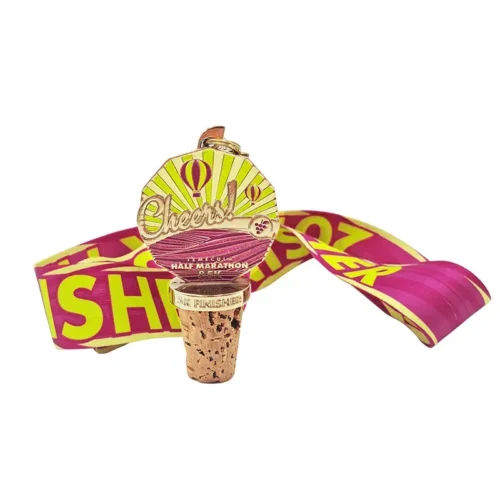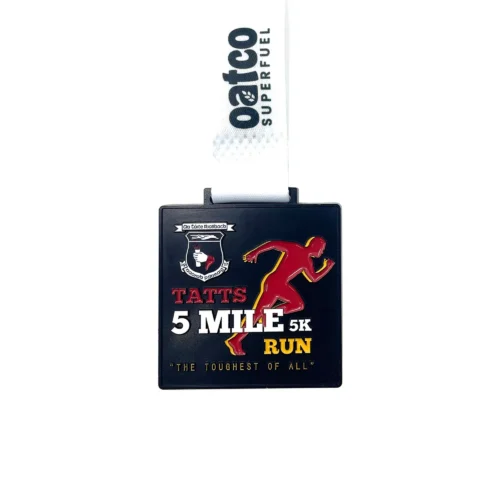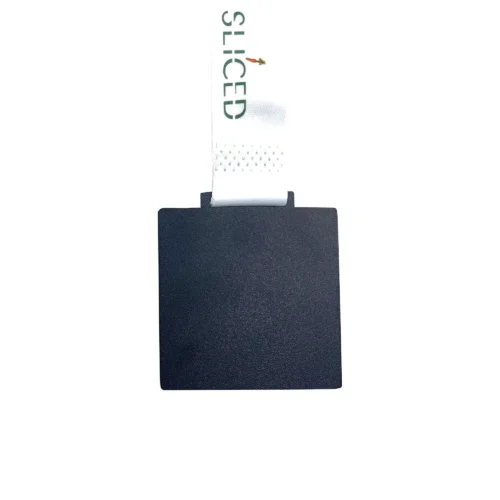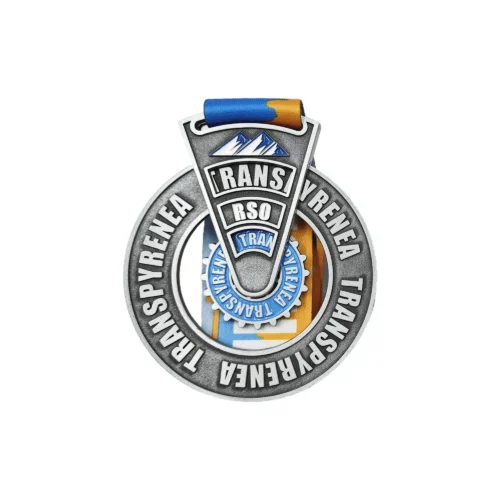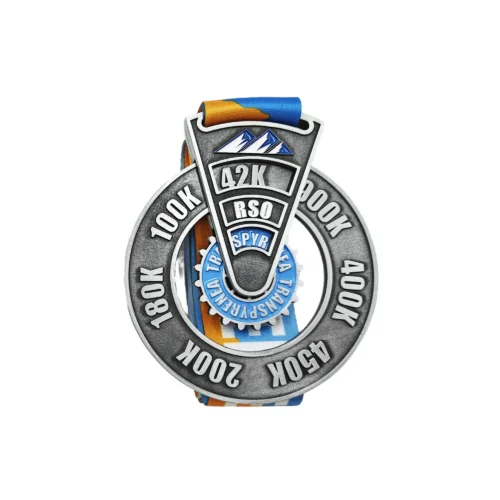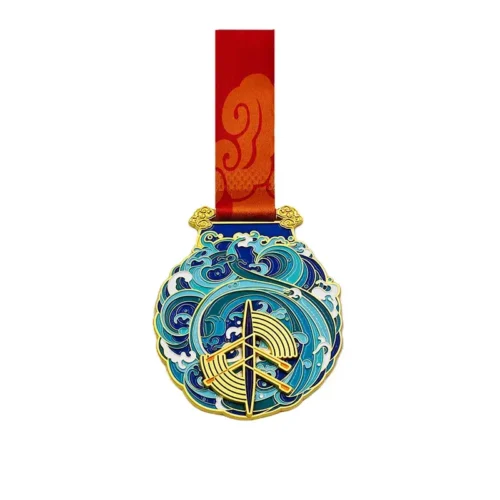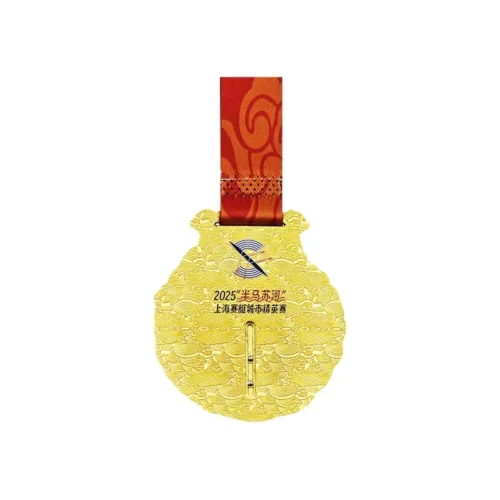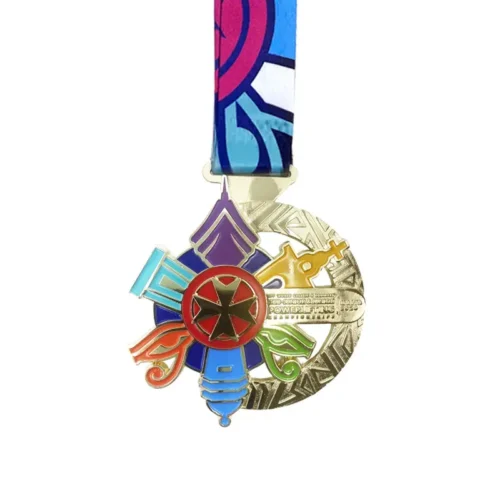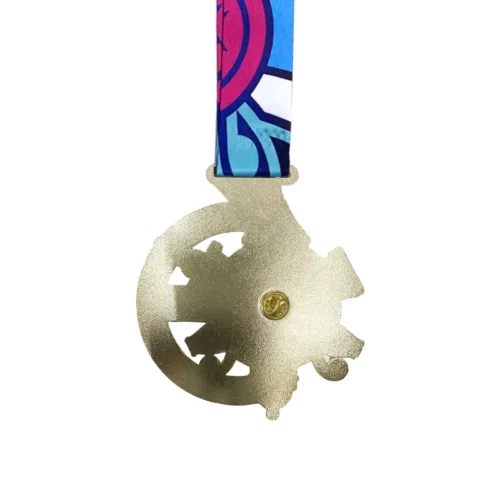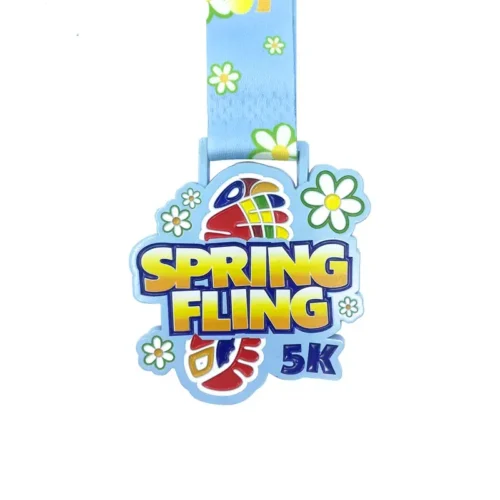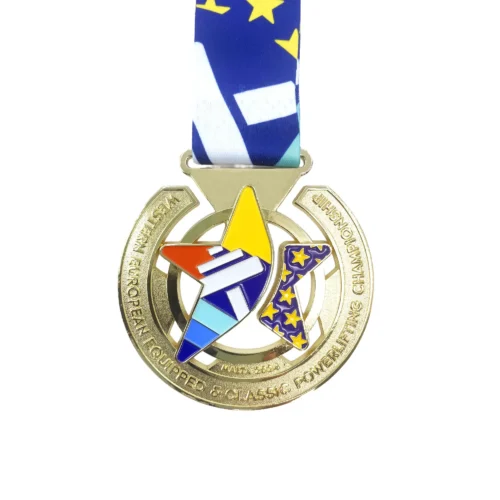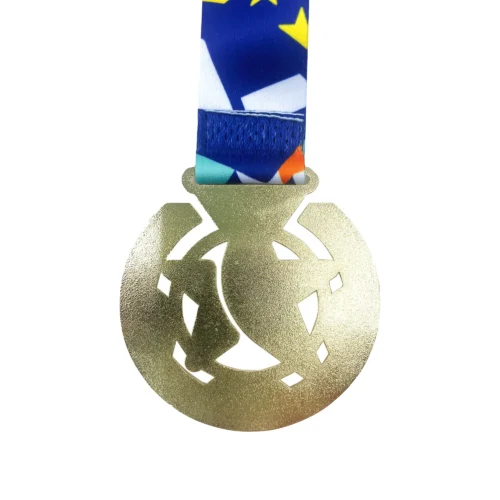When people think about awards, they often picture a shining medal hanging proudly from a ribbon. Yet, behind that polished surface lies a thoughtful design process that balances function, appearance, and cost. A medal is not simply a piece of metal—it is an object of recognition, memory, and symbolic meaning. In today’s competitive market, médailles personnalisées have grown into more than just prizes; they are marketing tools, cultural symbols, and event keepsakes. To understand how to design and manufacture them effectively, it is essential to look closely at the five main components of a medal and the growing demand in the custom medal industry.
Custom Medal Design: A Framework from Concept to Creation
Before breaking down the physical parts of a medal, it helps to outline the general design framework. A médaille personnalisée usually follows a structure that includes the medallion (the body of the medal), the suspension system or connecting part, the ribbon or lanyard, the top bar or brooch (in certain ceremonial contexts), and optional accessories or personalization features.
Design begins with identifying the purpose: is the medal meant for a marathon, a corporate recognition, or a cultural celebration? Each purpose affects the size, weight, and style of the medal. A marathon medal may emphasize durability and bold colors, while a commemorative medal for a heritage festival may highlight engraving and traditional motifs.
From there, the manufacturing process follows clear steps: mold creation, die-casting or stamping, polishing, plating, coloring, and assembly. The finish—whether gold, silver, antique bronze, or even UV printing—enhances the overall appearance and adds unique identity. Importantly, every design decision must consider not only aesthetics but also practicality, especially how the medal hangs, how it feels when worn, and how it represents the event.
Component One: The Medallion
The medallion is the centerpiece of any conception de médailles personnalisées. It usually consists of two main faces: the obverse (front) and reverse (back). The front typically showcases the primary event branding, such as logos, mascots, or event titles. The back is often reserved for dates, serial numbers, or personalized inscriptions like participant names.
Material and Thickness Choices
Medallions can be produced from zinc alloy, iron, brass, or even wood in modern variations. Zinc alloy is common for complex shapes because it allows for detailed molding, while iron works well for flatter designs with a budget-friendly cost. Thickness plays a role in perceived value: thinner medals reduce material costs, but thicker medals offer a premium feel.
Surface and Finishing Techniques
Finishes such as shiny gold, antique silver, or black nickel give medals their distinct character. On top of plating, different coloring techniques—soft enamel, imitation hard enamel, or UV printing—help bring designs to life. For instance, soft enamel creates texture by leaving raised metal edges, while UV printing allows for detailed gradients and full-color images.
Design Features
Medallions may also include special structural effects such as cut-outs, 3D embossing, or even rotating and interactive parts. These innovations are increasingly popular because they make a medal not only a reward but also a collectible art piece.
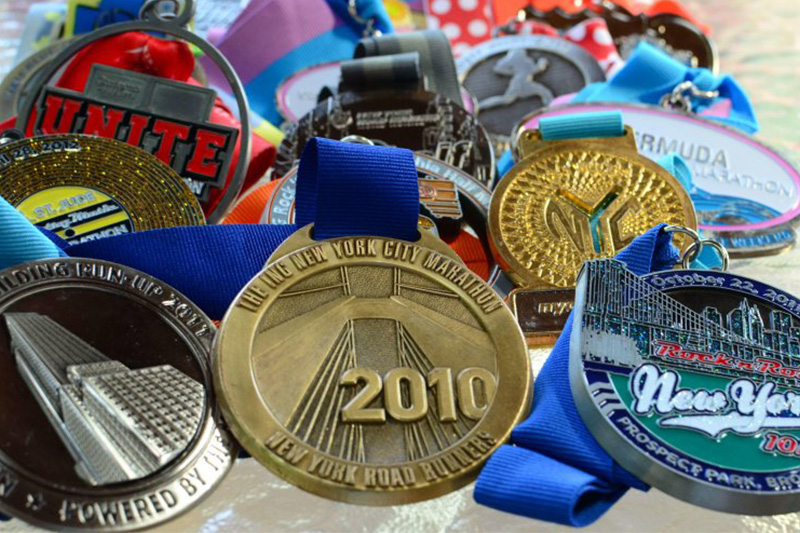
Component Two: Suspension and Connectors
A medal is incomplete without a way to attach the ribbon or lanyard. This is where suspension rings, loops, or jump rings come into play. These small but vital components bear the weight of the medal and ensure it hangs correctly.
Types of Connectors
-
Suspension ring: Cast as part of the medal for maximum strength.
-
Loop or eyelet: Integrated into the mold for a cleaner look.
-
Jump ring or split ring: A more flexible option, often used for lighter medals.
Strength and Durability
For heavy marathon medals, manufacturers often reinforce suspension points to prevent breakage during use. By contrast, smaller school or community medals may use standard rings without additional reinforcement.
Compatibility with Other Parts
The connector also determines how the medal interacts with ribbons, top bars, or brooches. For military-style decorations, a claw or suspender links the medallion to a fabric drape, whereas for sporting events, a simple jump ring often suffices.
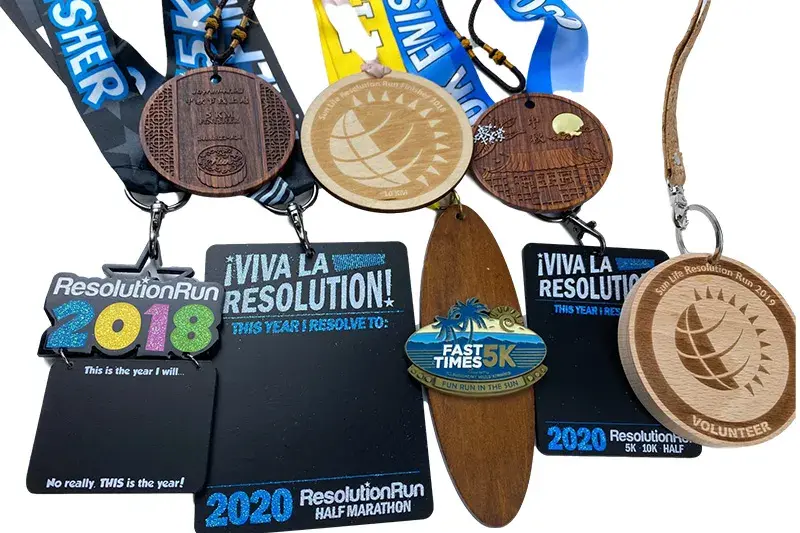
Component Three: Ribbon or Lanyard
The ribbon is the visible and tactile element that brings a médaille personnalisée to life. It frames the medallion and serves as the contact point with the wearer.
Ribbon Types
-
Neck ribbons: The most common type for races, usually in a V-shape.
-
Short drapes: Found in military or official medals, often attached to a top bar.
Dimensions and Proportions
A common guideline is to match ribbon width with medal size. A 2-inch-wide medal pairs well with a 1-inch ribbon, while larger medals above 2.5 inches may require ribbons of 1.5 inches for balance. Standard lengths range from 32 to 36 inches for neck wear.
Branding and Personalization
Ribbons also serve as a branding surface. Heat-transfer printing allows vibrant full-color designs, while woven or silk-screened ribbons can display event names, dates, or sponsor logos. A well-designed ribbon transforms a medal from a simple award into a marketing asset.
Additional Fittings
Accessories like safety clips, brooch backs, or decorative folds can add ceremonial elegance. For example, law enforcement awards may include a rosette or draped ribbon pattern.
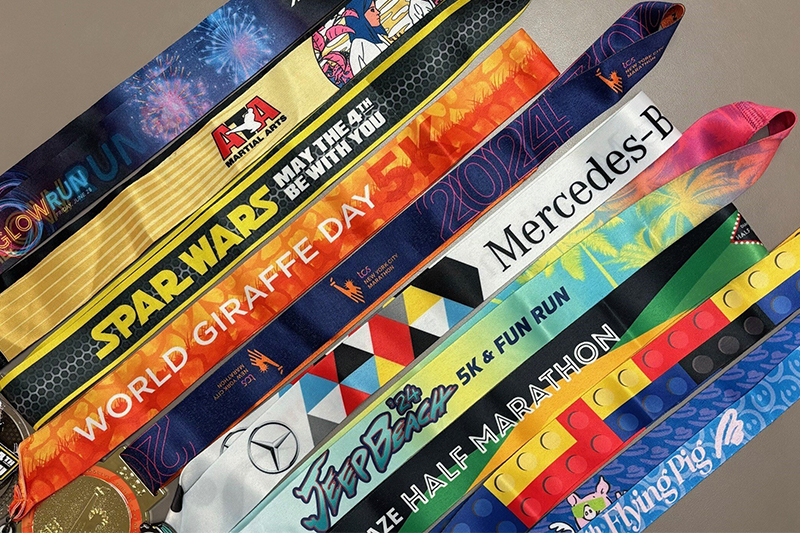
Component Four: Top Bar and Brooch
Not every medal uses a ribbon that hangs around the neck. In military and official settings, medals often include a top bar ou brooch pin.
Usage Context
These structures allow the medal to be pinned onto clothing rather than worn around the neck. They are particularly common in formal uniforms or state ceremonies.
Structural Elements
A top bar typically consists of a rigid horizontal piece, often engraved or decorated, with a brooch pin on the back. The ribbon is folded or pleated beneath the bar, creating a professional presentation.
Connection with Medallion
Depending on the design, the medallion may hang from the top bar via a claw, a suspension ring, or a special decorative element. This layered construction adds prestige and hierarchy to official medals.
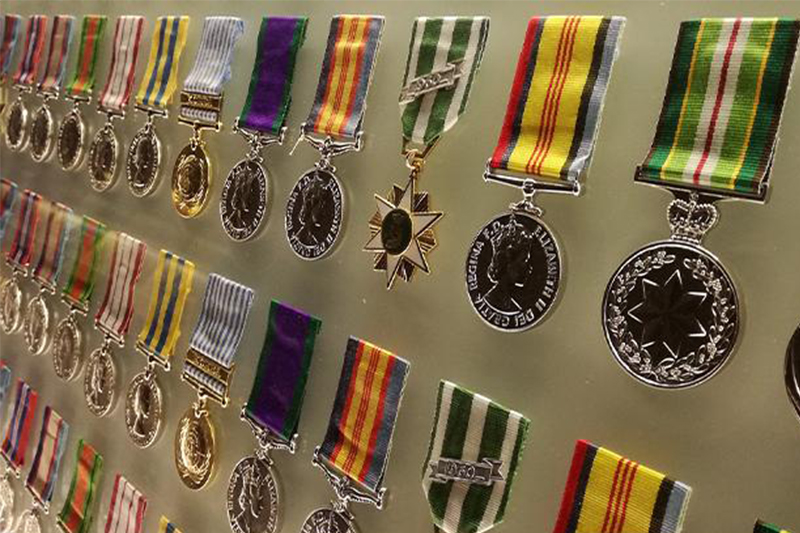
Component Five: Personalization and Accessories
The final component is where creativity and functionality merge. Personalization transforms a generic medal into a meaningful keepsake.
Customization Techniques
Engraving participant names, serial numbers, or event categories on the reverse side adds sentimental value. Laser etching is especially useful for smaller production runs where each medal requires unique text.
Accessories and Variations
Beyond ribbons and bars, medals may include additional elements such as keychains, magnets, or luminous coatings. For night races, glow-in-the-dark finishes are popular. For promotional events, detachable charms or acrylic inserts may enhance collectability.
Market Trends in Personalization
As events seek to differentiate themselves, personalization has become one of the strongest selling points in the custom medal market. Participants value items that feel unique to their experience, and organizations use this trend to strengthen brand identity.
Market Demand for Custom Medals
In recent years, the demand for médailles sur mesure has expanded beyond traditional sports. Community events, corporate recognition programs, cultural festivals, and even product launches now incorporate medals into their activities.
Several factors drive this market growth:
-
Mass Participation Sports: With the rise of marathons, triathlons, and obstacle races, medals have become expected rewards. Unique designs help events stand out in a crowded calendar.
-
Corporate Branding: Companies increasingly use medals for employee recognition or promotional giveaways, transforming them into tools for internal motivation and external marketing.
-
Cultural and Educational Events: Schools, charities, and cultural organizations adopt medals to create lasting memories and boost participant engagement.
-
Collectible Value: As medals evolve into artistic products, collectors treat them as souvenirs. Limited editions, glow-in-the-dark designs, and interactive features appeal to enthusiasts.
At the same time, cost efficiency remains critical. Organizers seek medals that are visually impressive but also affordable at scale. Manufacturers respond by optimizing material use, reusing molds, and offering free design services. The balance between creativity and affordability defines success in today’s fabrication de médailles sur mesure industry.
Cost-Effective Approaches in Medal Production
To meet rising demand while controlling budgets, event organizers and manufacturers rely on several strategies:
-
Choix des matériaux: Zinc alloy is favored for complex 3D designs, while iron provides a budget-friendly option for simpler medals.
-
Finishing Balance: Antique plating and soft enamel offer premium looks without excessive costs compared to multi-layer processes.
-
Mold Reuse: Standardized medal shapes with interchangeable backs or engravings reduce tooling expenses.
-
Ribbon Printing: Custom-printed ribbons can add branding impact at a fraction of the cost of reshaping the medallion.
By applying these principles, organizations can achieve personalized, high-quality medals without exceeding budget limits.
Conclusion
A medal may seem simple at first glance, but each one represents a careful balance of five main components: the medallion, the suspension connector, the ribbon or lanyard, the top bar or brooch, and the personalization or accessories that complete the design. Together, these elements create not only a reward but also a symbol of achievement, identity, and memory.
As the market for médailles personnalisées continues to expand across sports, corporate, and cultural sectors, the importance of thoughtful design and cost-conscious production grows stronger. Medals today are no longer just awards; they are storytelling objects, marketing tools, and collectible art pieces. Understanding their components is the first step toward creating designs that resonate with participants and stand out in a competitive landscape.


